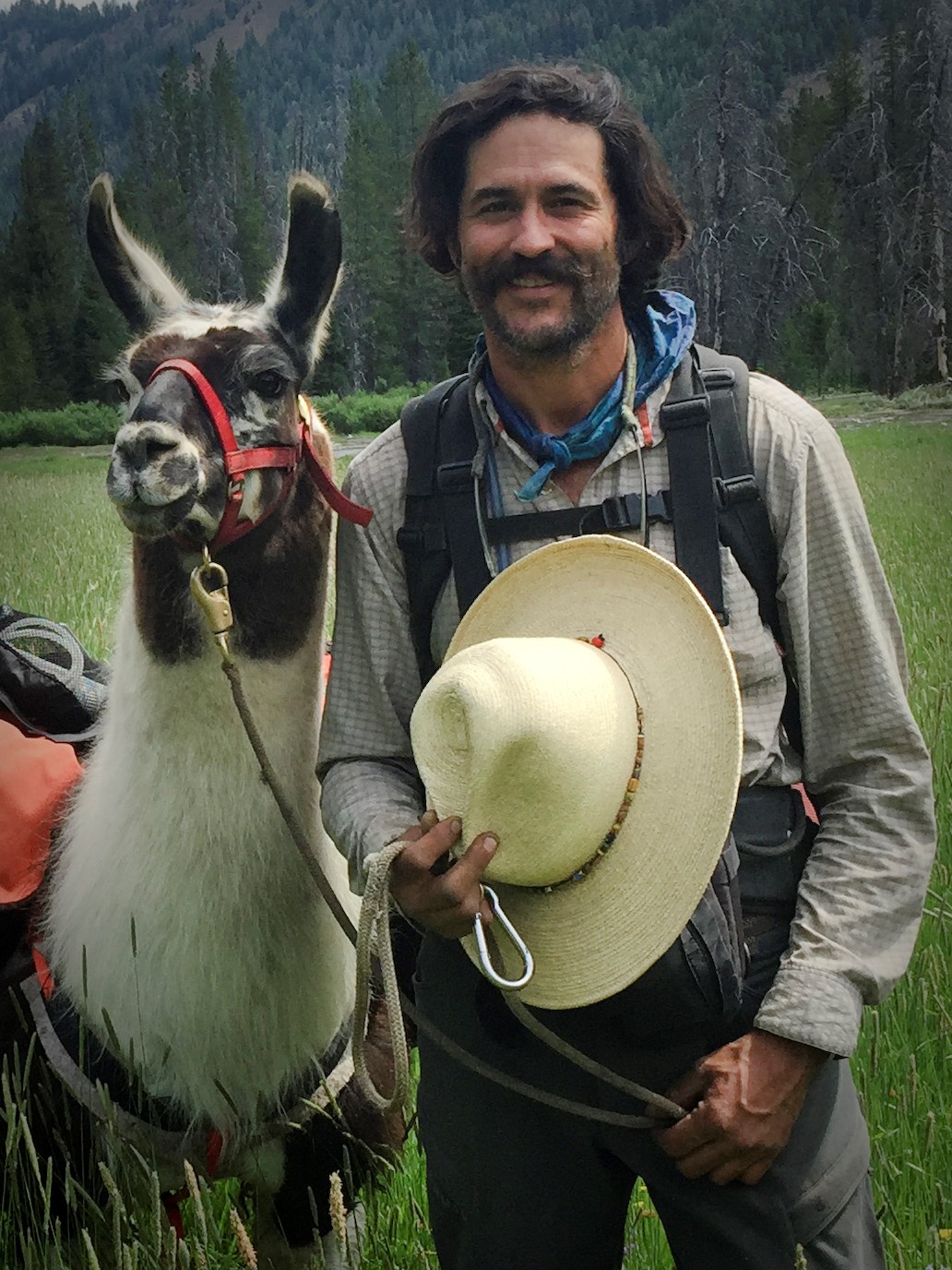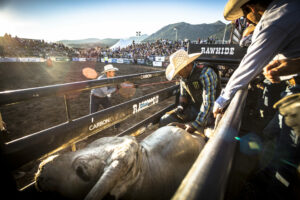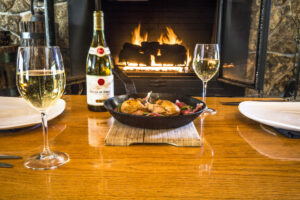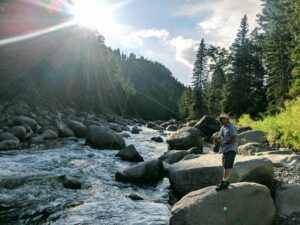It is a pleasure to talk with you today, Dennis, thank you for joining us and we can’t wait to hear more about your business and your thoughts on life in general, so let’s jump right in. When a person asks “Why take a llama trek?” what do you say?
Ha, I love this conversation. I say llamas help people enter the backcountry and escape the everyday norms of life in more ways than just the physical. I don’t want to get too far out there, but in my experience when people encounter llamas the pressures of life seem to instantly lift and the energy becomes all about the connection that person has with the llama and vice versa. The llama has evolved to be a trail companion for people, they provide a sense of security and elevated experience, unlike any other stock animal I’ve encountered. Some call it llama therapy. You know, they are quiet, they are inquisitive, and they are inclined to be your protector and friend.
I would say 90% of the people that come off one of our treks say it positively impacted their life in some significant way. You know the overall experience of being in Montana and the Greater Yellowstone ecosystem is special, and llamas accentuate those experiences many times over. I’ve known it personally for a long time, and it’s taken longer than I thought for the general public to catch on, but I always knew it would. The word is out and for whatever reason llamas are the new unicorn… it doesn’t hurt that the trips make for awesome posts on social media.
Can you tell us a little bit about the inception of Montana Llama Guides and how it went from an idea to reality?
It started back in 2006 when I was living in the Columbia Gorge area and gained an interest in tending livestock. At the time there was a really cool group of people in their late 20’s and 30’s doing new things with farm-to-table and local ranching. I was trying to figure out what I wanted to do in that same vein, and I knew urban life was definitely not my path. I actually first got started with raising alpacas and finding new ways to use alpaca fleece in the production of woven outdoor gear, like socks, mittens, and hats. After ten years of working with alpacas and the natural fibers, I realized the next thing for me was to explore the wilderness and guide backcountry experiences, so I switched from alpacas to llamas because they are naturally are better suited for the backcountry. I had heard of the first llama trekking outfitters scattered about the west in the 70’s and 80’s, these were the real pioneers, but I didn’t really have one mentor, and I had to figure it out how to do it commercially, and what that looked like. I started going down those paths of finding private or public land access and I did my due diligence to figure out the whole guiding and outfitting world. Mostly the path was entrepreneurial and I made the best of every challenge I came up against.
Can you give us a quick rundown on alpacas versus llamas?
Historically, alpacas and llamas are from South America. The Inca empire was built off of the lamb and alpaca. Alpacas were always used for their fiber or their fleece, much like sheep’s wool. And then the Incas used llamas for farm work, packing, and for meat as well. And so the big difference between alpaca and llama is that alpacas are smaller. Alpacas have one coat of fur. It grows and grows and the fleece must be sheared every year. Alpaca ears are a little shorter and spear-shaped. Overall, the alpaca body is a lot smaller. An average alpaca is going to weigh about one hundred and fifty, two hundred and seventy pounds. Llamas are a lot taller. You’ll notice the telltale sign of a llama is that its ears are longer and curve up like two bananas on top it’s head. Llamas are built for the mountains, and they are big, strong animals that can pack anywhere from 50 to 70 lbs.
At what point in time were llamas were introduced to North America?
They existed in Canada and the U.S. but if you saw a llama before 1970 it was probably in a circus or zoo. They were considered exotic animals and people have been exposed to them since the 19th century, but to encounter a llama in the way I work with them, as stock animals trained to support backcountry excursions… it was until the late ’70s that started to become a thing. Their history in the U.S. is very young and the general public is still catching on to the concept.
Wellness experiences have taken root everywhere people travel. Could you touch a little bit on what the trends in wellness travel means to your business?
That’s a growing interest of mine and I’m always trying to wrap my head around it. A lot of my clients say, you should do more with mindfulness and wellness. Sometimes I ask what does all that really mean? Nature is no doubt inspiring and I often ponder different ways of translating that into an experience. But how exactly is nature soothing? Why is it people feel this way? Urban folks or people that don’t get out much don’t have a true understanding of the benefits until they do it. For my business, I’ve found these little niche markets of people who want a backcountry llama experience, sometimes they don’t really know why, they are just curious. Especially today with covid and the importance of getting outside and placing a priority on social distancing, I’m seeing a small change in people’s awareness. Life is all about awareness and how we react in the world, so when we talk about wellness, the point of that is to give people therapy. This is what my experiences have always been about.
What we are really looking at now is people getting outside and away from technology and that simple switch promotes their own health and well-being. There’s all this interest in social media, and millions and millions of people are glued to their phones seeking visual experiences through a screen. It’s really kind of sad when you think about it. I like getting those people outside, it just changes them for the better immediately. I make sure that when we leave the trailhead people shake off. I say “Shake off all that you don’t need to bring with you. The back country is no place for that. The llamas don’t want it. I don’t want it. So get rid of it! Let’s go out and have an amazing experience.”
I was with some folks from New York recently who said they just want to get in the backcountry for peace and quiet. They were tired of hearing sirens and people yelling and car doors and all this noise going on. They just wanted to trek for the silence. If that’s what you call a wellness experience that is cool with me.
You have a lot of experience on public lands around the West and especially in Yellowstone Park, without giving away your secrets, do you have any favorite spots?
I like the high alpine, you know, I like going into the mountains. I like jagged peaks. We’ve got some great mountain ranges around here that do that. So personally, that’s where I thrive. I like getting away from folks. I like following river systems and getting into the lakes, the river systems or any kind of water drainage. There is so much other life that flows in those natural arteries… those pathways that we go on. So when we’re able to go into those types of areas, it’s just so cool to just explore and check out new wild places. The high alpine country is definitely my favorite and having llamas support the trek just makes everything so much better. I have a friend that likes to say, “I llama trek therefore I am”, he’s joking when he says it, but it’s funny to me because there is something true about it. Llamas help people feel more alive.
Given that you spent most of your career as an outfitter and guide, do you have any role models or mentors that you model yourself after?
It’s hard in this community because there just aren’t a lot of packers out there. There is a gentleman by the name of Steve Rolfing out of Columbia Falls, Montana. He raised alpacas and he had llamas too. Steve’s a great guy. He was one of the first to start raising llamas back in the late ’70s, and ’80s. He turned it into a packing business. I always think about him because my first two llamas came from him when I started packing. I can still hear the words he said; “Dennis, there’s these people that got all these different types of llamas and making things more complicated than they need to … just get you a couple and go out and have fun!” So I did that and I’ve always wanted more and more.
Do you have any bucket list trips on the brain?
I just have to go to the motherland. Yeah, I got to go to South America and hike with the llamas in Chile, Argentina, Peru. That’s a dream, I don’t know when it will happen but I’m sure it will.
When you’re on that trip and your sitting around the campfire at night, what’s in your cup?
I love Chilean wines, whites and reds, and I typically pack plenty of both to make sure I don’t run out. The cooler technology has really gotten good and my panniers are insulated so I can keep beers cold and wines at the proper temp for as long as I’m out on the trail. Once the ice is gone we chill our beverages in the high mountain streams. I love to pull out a bottle of dark beer from the creek on hot afternoons.
Sounds like a blast, and we look forward to the time when we can get out there with you and enjoy the backcountry. Cheers to you Dennis!



